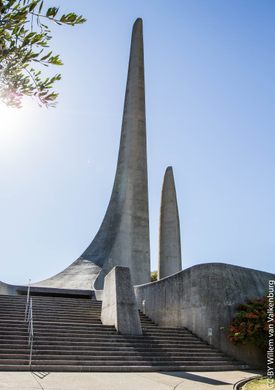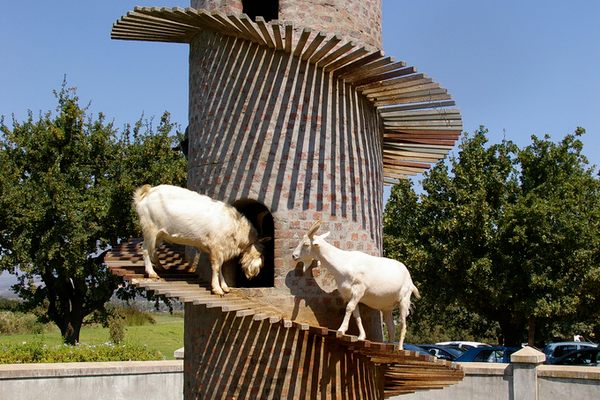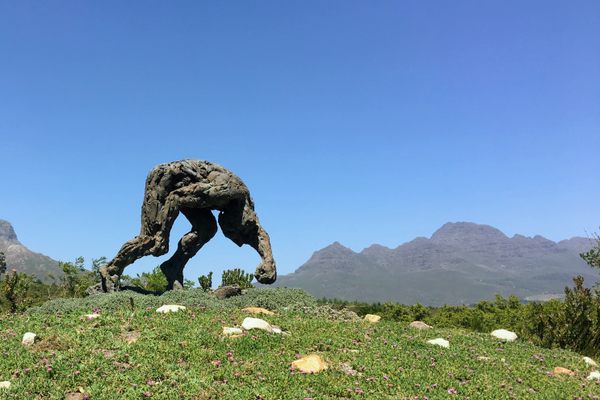Afrikaans Language Monument
The South African dialect's complex history is immortalized in stone, in one of the world's only monuments dedicated to a language.
The Afrikaans language, spoken mainly in South Africa and Namibia, originated as a dialect of Dutch, brought to the Cape area by settlers from the Dutch East India Company in the late 17th century. “Afrikaans” is the Dutch word for “African,” and the language was once called “Cape Dutch.” This very paradox and the language’s complex political history, is depicted in stone by the Afrikaans language monument in South Africa.
Over time, Afrikaans evolved into a distinct language with strong influences from other African languages, like Khoikhoi, Nguni, and Sotho, as well other European languages like French and Portuguese. The monument’s design reflects this progression: The three columns become progressively shorter, representing the waning influence of the European languages like Dutch and French, and the three convex mounds grow in size to indicate the increasing role played by African tongues.
These connect to the soaring obelisk that forms the main part of the structure, inspired by writer C.J. Langenhoven, who called Afrikaans a “rapidly ascending curve.” It is open at the top, signifying that the lexicon is alive and continues to grow. It is thought to be the only monument in the world dedicated to a language. Visible from miles away, it is imposing sight, watching over the region where it was born and is still a dominant force, the third most spoken language in South Africa.
The Afrikaans language became closely intertwined with South Africa’s political history, especially after the Anglo-Boer war of 1899-1902, when there was a strong push to establish English as the language of intellect. As a response against this, organizations were created to promote Afrikaans and the Afrikaner culture. In 1925, it was recognized as an official language with its own African identity, separate from its parent Dutch. However, the language’s most famous word became “apartheid,” meaning “apartness,” after the brutal racial segregation policy put into place in the mid-20th century. Afrikaans itself came to be associated with white supremacy, and was tangled in controversy all through the later half of the century.
The monument designed by Jan van Wijk is a granite tribute to this tumultuous history. The sculptor won a competition to design the structure, which was opened in 1975, 50 years after the language was given official status.
Know Before You Go
Access provided by road to entrance on the hill.





















Follow us on Twitter to get the latest on the world's hidden wonders.
Like us on Facebook to get the latest on the world's hidden wonders.
Follow us on Twitter Like us on Facebook